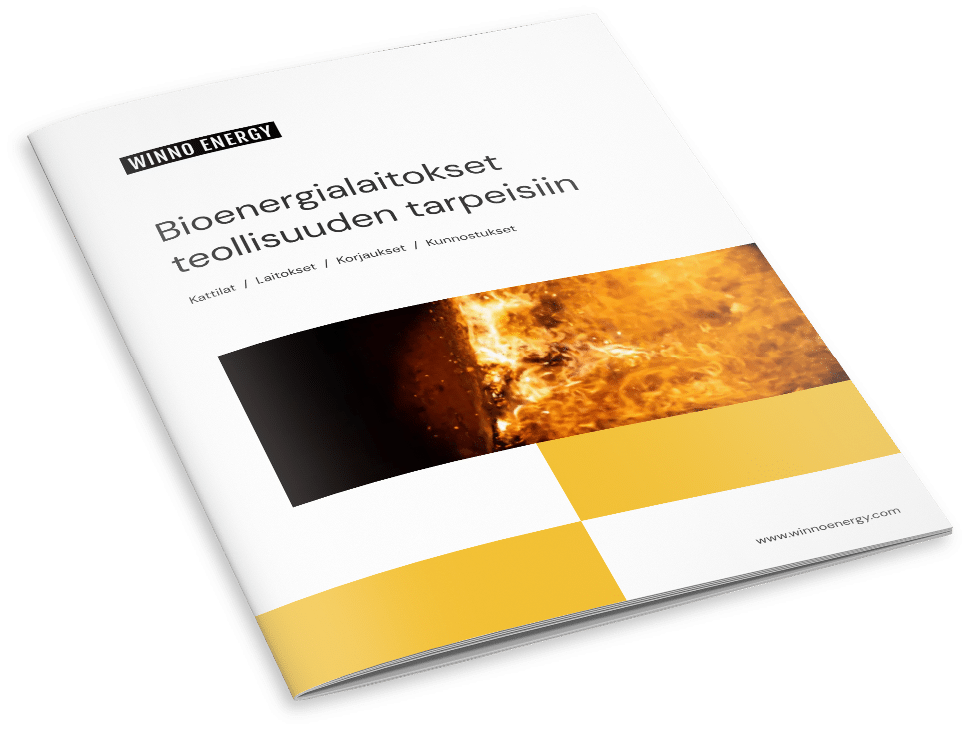As the world looks for renewable and sustainable energy sources, biomass has emerged as a promising option. Biomass energy uses organic materials like wood, crops, and agricultural residues to create power and heat. While it has challenges, biomass energy could help reduce greenhouse gas emissions and fight climate change.
In this article, we’ll explore the current status of biomass energy and its potential as a future power source.
What Is Biomass Energy?
Biomass energy comes from organic materials like plants and animal waste. These materials can be burned or converted into biogas or biofuels for heat, electricity, or both. Common sources include wood, agricultural crops, and municipal solid waste.
Compared to wind or solar power, biomass energy is more consistent and reliable. It doesn’t rely on weather conditions and can be used for both heat and electricity. This makes it a versatile and reliable renewable energy source.
How We Get Energy from Biomass
Plants and Trees
Plants and trees play a big role in making biomass energy. They use a process called photosynthesis to turn energy from the sun into fuel. This involves using things like wood chips, farm leftovers, and city waste to make heat, power, or biofuels. But making energy from plants and trees can harm them. For instance, taking lots of trees for energy can cause deforestation. And burning plant material for energy can put bad stuff in the air, hurting plants and trees.
So, it’s really important to handle making energy from plants and trees in a way that keeps them growing and healthy.
Animal Waste
Animal waste can harm the environment by causing air and water pollution if not handled properly. Thankfully, anaerobic digestion can turn this waste into biogas, which is a renewable energy source. This biogas can be used for cooking, heating, or generating electricity. The benefits are abundant: it reduces greenhouse gas emissions, provides sustainable energy, and helps manage waste by diverting organic waste from landfills.
It also lessens dependence on non-renewable energy sources, contributing to overall environmental sustainability. Effectively managing and using animal waste for energy production is a win-win solution for the environment and our energy needs.
Garbage and Landfills
Garbage and landfills can harm the environment by affecting the air, water, and soil quality nearby. Organic waste in landfills can produce methane, a powerful greenhouse gas that contributes to climate change. Recycling and composting can help reduce landfill waste, protecting the environment and conserving resources. Accumulated garbage in landfills can also release harmful chemicals and toxins into the environment.
As waste breaks down, it can form leachate, a contaminated liquid that may seep into the soil and groundwater, posing risks to human health and the environment. Managing and disposing of waste properly is important to reduce these risks and ensure the health of our ecosystem.
Good Things About Biomass Energy
Renewable Resource
Biomass energy comes from organic materials like wood, crops, and waste. These can be burned or turned into biofuels for energy. One good thing about biomass energy is that the materials used can be grown again, unlike fossil fuels. Also, using biomass energy helps reduce organic waste in landfills, which is good for the environment. But, producing biomass needs a lot of space and might affect natural ecosystems.
It’s important to weigh the benefits and challenges of using biomass energy when thinking about its impact on the environment and society.
Less Garbage in Landfills
Biomass energy helps reduce landfill waste by turning organic materials into energy.
This includes crop residue, wood, and animal waste.
Using these materials for energy reduces the volume of waste in landfills.
It also offers a sustainable energy source.
This approach decreases greenhouse gas emissions and promotes a circular economy.
Additionally, it minimizes the environmental impact of traditional waste disposal.
Can Help Farmers
Biomass energy can help farmers. It provides a renewable source of power for running agricultural equipment. This reduces their dependence on non-renewable energy sources. It also saves them money in the long run and lowers their carbon footprint.
Biomass energy supports and benefits agricultural practices. It offers a sustainable way to dispose of organic waste materials from farming activities, such as crop residues and animal manure. By converting these waste materials into bioenergy, farmers can reduce the environmental impact of their operations and create an additional revenue stream.
The specific advantages of biomass energy for farmers compared to other energy sources include lower operating costs and increased energy independence. Biomass energy can also help stabilize and reduce the volatility of energy prices, important for long-term planning in the agricultural sector.
Biomass Energy Around the World
Countries Using Biomass
Some countries that use biomass as a source of energy include the United States, Brazil, India, and China. These countries burn organic materials like wood, agricultural waste, and plant-based materials to create electricity and heat. They also use biomass to make biofuels like ethanol and biodiesel for vehicles.
While they benefit from renewable energy, they face challenges in ensuring a constant supply of biomass and addressing its environmental impact. Despite these challenges, biomass energy has several benefits, such as reducing greenhouse gas emissions, providing energy security, and supporting rural economies with locally-sourced materials.
Types of Biomass Plants
There are different types of biomass plants used to make energy. These include wood, agricultural crops, municipal solid waste, and animal waste.
These plants are used to create energy through processes like combustion and gasification. For instance, wood can be burned to make heat, while organic waste can be turned into biogas through anaerobic digestion.
Plants, trees, animal waste, and garbage/landfills all contribute to biomass energy production by giving organic material that can be used as fuel to make heat and electricity.
Compared to other green energies, biomass energy is thought to be quite efficient and has a positive impact on the environment. Biomass plants can also help cut down greenhouse gas emissions and offer a renewable energy source.
Generally, biomass energy plays a big role in the move to more sustainable and environmentally friendly energy sources.
Problems with Biomass Energy
Needs a Lot of Space
Biomass energy usage impacts space needs in several ways.
First, growing biomass feedstocks like plants and trees requires large areas of land. Also, biomass power plants and facilities take up a significant amount of space for construction and maintenance. Compared to other renewable energy sources, biomass energy consumption typically requires more space due to the need for land to grow feedstocks and the physical infrastructure for processing them. In contrast, solar panels and wind turbines can be installed on a smaller footprint of land, making them more space-efficient. Therefore, the use of biomass energy is closely linked with a high demand for space, for both feedstock cultivation and energy production.
Might Hurt Wild Places
Biomass energy can harm wild places. This is due to deforestation, soil erosion, and loss of biodiversity. When forests are cleared for biomass energy crops, it disrupts the natural habitat for many plant and animal species, leading to a decrease in overall biodiversity.
The harvesting and processing of biomass can also result in soil erosion, further damaging the ecosystems of wild places. To minimize the potential harm, it’s important to carefully manage biomass energy production and prioritize the use of waste and residue materials instead of clearing new areas for energy crops.
By using sustainable forestry practices and promoting the use of non-food biomass sources, such as agricultural waste and algae, the negative impact on wild places can be reduced. Additionally, implementing stricter regulations and monitoring systems can help ensure that biomass energy production is not causing irreversible damage to the environment.
Biomass Energy vs Other Green Energies
Biomass energy comes from organic materials like wood, agricultural waste, and municipal solid waste. It’s reliable because it’s not affected by weather, unlike wind and solar power. While it does produce carbon dioxide, the growth of new plants can offset this. Hydroelectric and geothermal power can disrupt habitats and use a lot of water. Biomass energy may be a better fit for some regions or industries due to the availability of organic waste materials.
It could also be more feasible in terms of investment and maintenance costs for certain industries.
Can Biomass Energy Change the World?
Biomass energy can be a sustainable and renewable energy source. It uses organic materials like wood, crop residues, and agricultural byproducts. This helps decrease reliance on non-renewable energy sources such as coal and oil. As a result, it can reduce greenhouse gas emissions and address climate change.
The widespread use of biomass energy can have positive environmental and economic impacts globally. It can create new jobs in the agricultural and forestry sectors, while also reducing waste and pollution. Compared to other green energy sources, biomass energy is feasible and can significantly impact the world’s energy supply. When managed sustainably, biomass can be continuously replenished, providing a reliable source of renewable energy.
Over to you
Biomass energy is a renewable and sustainable alternative to fossil fuels. It uses organic materials like wood, agricultural residues, and waste to generate power. Although it currently meets only a small portion of the world’s energy needs, advancements in technology and growing interest in green energy indicate that biomass energy could have a bigger role in the future.
However, there are worries about its effects on land use, food supply, and emissions. Ongoing research and development will be important in deciding if biomass energy can become a significant part of the global energy mix.
FAQ
What is biomass energy and how is it produced?
Biomass energy is produced from organic materials such as wood, crop waste, and animal manure. It is produced through processes like burning, fermentation, and conversion to biofuels.
What are the advantages of using biomass energy?
The advantages of using biomass energy include reducing greenhouse gas emissions, supporting local economies through job creation, and reducing reliance on fossil fuels. Examples of biomass energy sources are wood, agricultural residues, and dedicated energy crops.
What are the limitations or challenges of using biomass energy?
The limitations or challenges of using biomass energy include limited availability of biomass resources, competition with food production, and high transportation costs for bulky biomass. Additionally, biomass energy production can result in air pollution and deforestation if not managed properly.
How does biomass energy compare to other renewable energy sources?
Biomass energy has similar environmental benefits to other renewable energy sources like solar and wind energy. However, it has the added advantage of being able to produce energy consistently, regardless of the time of day or weather conditions.
Is biomass energy a sustainable and viable option for the future?
Yes, biomass energy is sustainable and viable for the future. It reduces carbon emissions and can be sourced from organic waste, wood, and crops. Examples of biomass energy include using wood pellets for heating and converting organic waste into biogas for electricity.


